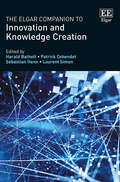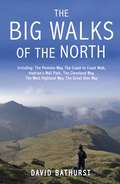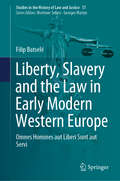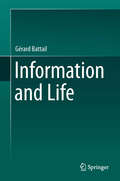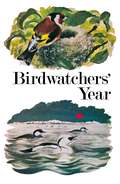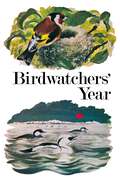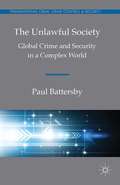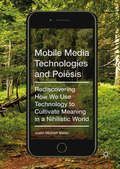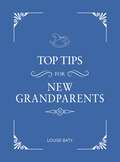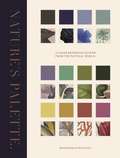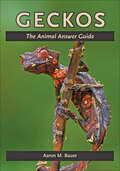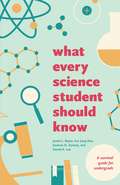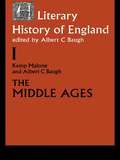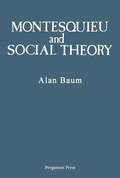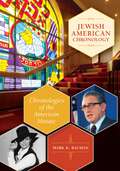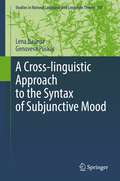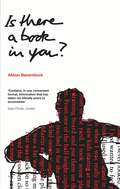- Table View
- List View
The Elgar Companion to Innovation and Knowledge Creation: A Multi-disciplinary Approach (Elgar Original Reference Ser.)
by Harald Bathelt Patrick Cohendet Sebastian Henn Laurent SimonThis Companion provides a comprehensive, state-of-the-art overview and critical evaluation of existing conceptualizations and new developments in innovation research. Arguing that innovation research requires inter- and trans-disciplinary explanations and methodological pluralism at various levels, it draws on multiple perspectives of innovation, knowledge and creativity from economics, geography, history, management, political science and sociology. The Companion provides the definitive guide to the field and introduces new approaches, perspectives and developments. The Companion systematically analyzes the challenges, problems and gaps in innovation research. Leading scholars reflect upon and critically assess the fundamental topics of the field, including: • innovation as a concept • innovation and institutions • innovation and creativity • innovation, networking and communities • innovation in permanent spatial settings • innovation in temporary and virtual settings • innovation, entrepreneurship and market making • innovation governance and management. Innovation researchers and students in economics, economic geography, industrial sociology, innovation studies, international business, management and political science will find the Companion to be an essential resource. It will also appeal to practitioners in innovation and policy makers in economic development, public policy and innovation policy.
The Big Walks of the North
by David BathurstDavid Bathurst has unlaced his boots to produce this definitive companion to the ten best-loved long-distance footpaths in the north of Britain, with each split into manageable sections. Combining detailed descriptions with an appreciation of the beauty and history of the British countryside, this in an indispensable guide for all walkers.
Liberty, Slavery and the Law in Early Modern Western Europe: Omnes Homines aut Liberi Sunt aut Servi (Studies in the History of Law and Justice #17)
by Filip BatseléThis book investigates the legal evolution of the “free soil principle” in England, France and the Low Countries during the Early Modern period (ca. 1500–1800), which essentially stated that, as soon as slaves entered a certain country, they would immediately gain their freedom. This book synthesizes the existing literature on the origins and evolution of the principle, adds new insights by drawing on previously undiscussed primary sources on the development of free soil in the Low Countries and employs a pan-Western, European and comparative approach to identify and explain the differences and similarities in the application of this principle in France, England and the Low Countries. Divided into four sections, the book begins with a brief introduction to the subject matter, putting it in its historical context. Slavery is legally defined, using the established international law definition, and both the status of slavery in Europe before the Early Modern Period and the Atlantic slave trade are discussed. Secondly, the book assesses the legal origins of the free soil principle in England, France and the Low Countries during the period 1500–1650 and discusses the legal repercussions of slaves coming to England, France and the Low Countries from other countries, where the institution was legally recognized. Thirdly, it addresses the further development of the free soil principle during the period 1650–1800. In the fourth and last section, the book uses the insights gained to provide a pan-Western, European and comparative perspective on the origins and application of the free soil principle in Western Europe. In this regard, it compares the origins of free soil for the respective countries discussed, as well as its application during the heyday of the Atlantic slave trade. This perspective makes it possible to explain some of the divergences in approaches between the countries examined and represents the first-ever full-scale country comparison on this subject in a book.
Information and Life
by Gérard BattailCommunication, one of the most important functions of life, occurs at any spatial scale from the molecular one up to that of populations and ecosystems, and any time scale from that of fast chemical reactions up to that of geological ages. Information theory, a mathematical science of communication initiated by Shannon in 1948, has been very successful in engineering, but biologists ignore it.This book aims at bridging this gap. It proposes an abstract definition of information based on the engineers' experience which makes it usable in life sciences. It expounds information theory and error-correcting codes, its by-products, as simply as possible. Then, the fundamental biological problem of heredity is examined. It is shown that biology does not adequately account for the conservation of genomes during geological ages, which can be understood only if it is assumed that genomes are made resilient to casual errors by proper coding. Moreover, the good conservation of very old parts of genomes, like the HOX genes, implies that the assumed genomic codes have a nested structure which makes an information the more resilient to errors, the older it is.The consequences that information theory draws from these hypotheses meet very basic but yet unexplained biological facts, e.g., the existence of successive generations, that of discrete species and the trend of evolution towards complexity. Being necessarily inscribed on physical media, information appears as a bridge between the abstract and the concrete. Recording, communicating and using information exclusively occur in the living world. Information is thus coextensive with life and delineates the border between the living and the inanimate.
Birdwatchers' Year (Poyser Monographs)
by Leo Batten Jeremy Sorensen Donald Watson Mike J. WareingBirdwatchers' Year is, in essence, six 'years' of bird activity and behaviour as recorded, month by month, by six experienced bird watchers and ornithologists. The result is a fascinating compilation of fact, anecdote and general observation as seen and noted by the authors, that will appeal to birdwatchers at all levels of expertise. The habitats (Brent Reservoir in NW London, a Kentish woodland, the Ouse Washes in Cambridgeshire, farmland in Derbyshire, a mountain region of SW Scotland, and an island, the Calf of Man) encompass a wide and varied range of breeding, resident and passage birds, but the authors' observations are not confined to bird life alone - there are comments and 'asides' on many aspects of natural history and wildlife, weather and seasons, conservation and ecology. Each author has brought an individual approach to his 'diary' with the result that they are entertainingly diverse in style, content and viewpoint. The common factor throughout is an affectionate regard for the subject, an intimate knowledge of the habitat, and an evident understanding and knowledge of the birds and their environment. The diarists are: Leo Batten, Research Officer at the British Trust for Ornithology; Dr Jim Flegg, Director of the BTO; Jeremy Sorensen, RSPB Warden of the Ouse Washes; Donald Watson, bird artist and past-President of the Scottish Ornithologists' Club; Mike J. Wareing, farmer; Malcolm Wright, Warden of the Calf of Man Bird Observatory. The diaries are illustrated with line drawings by Ian Willis, except for that of Donald Watson, which is illustrated by its author. The bookjacket illustrations are by Ian Willis.
Birdwatchers' Year (Poyser Monographs #119)
by Leo Batten Jeremy Sorensen Donald Watson Mike J. WareingBirdwatchers' Year is, in essence, six 'years' of bird activity and behaviour as recorded, month by month, by six experienced bird watchers and ornithologists. The result is a fascinating compilation of fact, anecdote and general observation as seen and noted by the authors, that will appeal to birdwatchers at all levels of expertise. The habitats (Brent Reservoir in NW London, a Kentish woodland, the Ouse Washes in Cambridgeshire, farmland in Derbyshire, a mountain region of SW Scotland, and an island, the Calf of Man) encompass a wide and varied range of breeding, resident and passage birds, but the authors' observations are not confined to bird life alone - there are comments and 'asides' on many aspects of natural history and wildlife, weather and seasons, conservation and ecology. Each author has brought an individual approach to his 'diary' with the result that they are entertainingly diverse in style, content and viewpoint. The common factor throughout is an affectionate regard for the subject, an intimate knowledge of the habitat, and an evident understanding and knowledge of the birds and their environment. The diarists are: Leo Batten, Research Officer at the British Trust for Ornithology; Dr Jim Flegg, Director of the BTO; Jeremy Sorensen, RSPB Warden of the Ouse Washes; Donald Watson, bird artist and past-President of the Scottish Ornithologists' Club; Mike J. Wareing, farmer; Malcolm Wright, Warden of the Calf of Man Bird Observatory. The diaries are illustrated with line drawings by Ian Willis, except for that of Donald Watson, which is illustrated by its author. The book jacket illustrations are by Ian Willis.
The Unlawful Society: Global Crime and Security in a Complex World (Transnational Crime, Crime Control and Security)
by Paul BattersbyExploring the dynamics of law-making in a world where the pace of technological change is outstripping our capacity to capture new forms of transnational crime, this book uses the innovative concept of unlawfulness to examine the crimes of the global overworld, forming a unique analysis of global order in the twenty-first century.
Mobile Media Technologies and Poiēsis: Rediscovering How We Use Technology to Cultivate Meaning in a Nihilistic World
by Justin Michael BattinThis book intertwines phenomenological fieldwork with a wide range of Heidegger’s writings to explore how our everyday uses of mobile media technologies permit a unique avenue to rediscover poiēsis, our creative cultivation that is simultaneously a bringing forth, a revealing. Shining a light on poiēsis better allows us to see how human beings are, at their core, dwellers that disclose worlds and cultivate meaning. In our chaotic modern world, our ability to appreciate this foundational feature of our existence seems to be fading from view. Such forgetting has fractured our confidence; we increasingly question, doubt, and struggle with what unfolds before us. This book thus argues that we ought to look towards our intimate and recursive mobile media practices as the avenue for which we can revitalize poiēsis, as doing so allows us a purview into how we are always situated in a meaningful locale, playing an imperative role in its continued cultivation.
Mobile Media Technologies and Poiēsis: Rediscovering How We Use Technology to Cultivate Meaning in a Nihilistic World
by Justin Michael BattinThis book intertwines phenomenological fieldwork with a wide range of Heidegger’s writings to explore how our everyday uses of mobile media technologies permit a unique avenue to rediscover poiēsis, our creative cultivation that is simultaneously a bringing forth, a revealing. Shining a light on poiēsis better allows us to see how human beings are, at their core, dwellers that disclose worlds and cultivate meaning. In our chaotic modern world, our ability to appreciate this foundational feature of our existence seems to be fading from view. Such forgetting has fractured our confidence; we increasingly question, doubt, and struggle with what unfolds before us. This book thus argues that we ought to look towards our intimate and recursive mobile media practices as the avenue for which we can revitalize poiēsis, as doing so allows us a purview into how we are always situated in a meaningful locale, playing an imperative role in its continued cultivation.
Top Tips for New Grandparents: Practical Advice for First-Time Grandparents
by Louise BatyBecoming a grandparent is one of life’s true joys, but your new role comes with a lot to think about! This handy book is packed with simple tips and advice, from bonding with the little ones to supporting the new parents, to guide you through those magical first steps with the newest members of your family.
Nature’s Palette: A Color Reference System from the Natural World
by Patrick BatyA gorgeous expanded edition of Werner's Nomenclature of Colours, a landmark reference book on color and its origins in natureFirst published in 1814, Werner's Nomenclature of Colours is a taxonomically organized guide to color in the natural world. Compiled by German geologist Abraham Gottlob Werner, the book was expanded and enhanced in 1821 by Patrick Syme, who added color swatches and further color descriptions, bringing the total number of classified hues to 110. The resulting resource has been invaluable not only to artists and designers but also to zoologists, botanists, mineralogists, anatomists, and explorers, including Charles Darwin on the famous voyage of the Beagle.Nature's Palette makes this remarkable volume available to today's readers, and is now fully enhanced with new illustrations of all the animals, plants, and minerals Werner referenced alongside each color swatch. Readers can see "tile red" in a piece of porcelain jasper, the breast of a cock bullfinch, or a Shrubby Pimpernel. They can admire "Berlin blue" on a piece of sapphire, the Hepatica flower, or the wing feathers of a jay. Interspersed throughout the book are lavish feature pages displaying cases of taxidermy, eggs, shells, feathers, minerals, and butterflies, with individual specimens cross-referenced to the core catalog.Featuring contributions by leading natural history experts along with more than 1,000 color illustrations and eight gatefolds, Nature's Palette is the ideal illustrated reference volume for visual artists, naturalists, and anyone who is captivated by color.
Geckos: The Animal Answer Guide (The Animal Answer Guides: Q&A for the Curious Naturalist)
by Aaron M. BauerQ: How do geckos walk across ceilings? A: Millions of hair-like setae on each foot.Q: Where do geckos come from? A: Throughout the world. Usually where it’s warm.Q: How many species of geckos are there? A: Close to 1,500 and counting!Q: What do they eat? A: Insects mostly. Discover the biology, natural history, and diversity of geckos—the acrobatic little lizards made famous by a car insurance ad campaign. Lizard biologist and gecko expert Aaron Bauer answers deceptively simple questions with surprising and little-known facts. Readers can explore color photographs that reveal the natural wonder and beauty of the gecko form and are further informed by images of how geckos live in their natural habitats. Although written for nonexperts, Geckos also provides a carefully selected bibliography and a new list of all known species that will be of interest to herpetologists. Anyone who owns a gecko, has seen them in the wild, or has wondered about them will appreciate this gem of a book.
What Every Science Student Should Know (Chicago Guides to Academic Life)
by Justin L. Bauer Yoo Jung Kim Andrew H. Zureick Daniel K. Lee“I am often amazed at how much more capability and enthusiasm for science there is among elementary school youngsters than among college students. . . . We must understand and circumvent this dangerous discouragement. No one can predict where the future leaders of science will come from.”—Carl Sagan In 2012, the White House put out a call to increase the number of STEM graduates by one million. Since then, hundreds of thousands of science students have started down the path toward a STEM career. Yet, of these budding scientists, more than half of all college students planning to study science or medicine leave the field during their academic careers. What Every Science Student Should Know is the perfect personal mentor for any aspiring scientist. Like an experienced lab partner or frank advisor, the book points out the pitfalls while providing encouragement. Chapters cover the entire college experience, including choosing a major, mastering study skills, doing scientific research, finding a job, and, most important, how to foster and keep a love of science. This guide is a distillation of the authors’ own experiences as recent science graduates, bolstered by years of research and interviews with successful scientists and other science students. The authorial team includes former editors-in-chief of the prestigious Dartmouth Undergraduate Journal of Science. All have weathered the ups and downs of undergrad life—and all are still pursuing STEM careers. Forthright and empowering, What Every Science Student Should Know is brimming with insider advice on how to excel as both a student and a scientist.
What Every Science Student Should Know (Chicago Guides to Academic Life)
by Justin L. Bauer Yoo Jung Kim Andrew H. Zureick Daniel K. Lee“I am often amazed at how much more capability and enthusiasm for science there is among elementary school youngsters than among college students. . . . We must understand and circumvent this dangerous discouragement. No one can predict where the future leaders of science will come from.”—Carl Sagan In 2012, the White House put out a call to increase the number of STEM graduates by one million. Since then, hundreds of thousands of science students have started down the path toward a STEM career. Yet, of these budding scientists, more than half of all college students planning to study science or medicine leave the field during their academic careers. What Every Science Student Should Know is the perfect personal mentor for any aspiring scientist. Like an experienced lab partner or frank advisor, the book points out the pitfalls while providing encouragement. Chapters cover the entire college experience, including choosing a major, mastering study skills, doing scientific research, finding a job, and, most important, how to foster and keep a love of science. This guide is a distillation of the authors’ own experiences as recent science graduates, bolstered by years of research and interviews with successful scientists and other science students. The authorial team includes former editors-in-chief of the prestigious Dartmouth Undergraduate Journal of Science. All have weathered the ups and downs of undergrad life—and all are still pursuing STEM careers. Forthright and empowering, What Every Science Student Should Know is brimming with insider advice on how to excel as both a student and a scientist.
What Every Science Student Should Know (Chicago Guides to Academic Life)
by Justin L. Bauer Yoo Jung Kim Andrew H. Zureick Daniel K. Lee“I am often amazed at how much more capability and enthusiasm for science there is among elementary school youngsters than among college students. . . . We must understand and circumvent this dangerous discouragement. No one can predict where the future leaders of science will come from.”—Carl Sagan In 2012, the White House put out a call to increase the number of STEM graduates by one million. Since then, hundreds of thousands of science students have started down the path toward a STEM career. Yet, of these budding scientists, more than half of all college students planning to study science or medicine leave the field during their academic careers. What Every Science Student Should Know is the perfect personal mentor for any aspiring scientist. Like an experienced lab partner or frank advisor, the book points out the pitfalls while providing encouragement. Chapters cover the entire college experience, including choosing a major, mastering study skills, doing scientific research, finding a job, and, most important, how to foster and keep a love of science. This guide is a distillation of the authors’ own experiences as recent science graduates, bolstered by years of research and interviews with successful scientists and other science students. The authorial team includes former editors-in-chief of the prestigious Dartmouth Undergraduate Journal of Science. All have weathered the ups and downs of undergrad life—and all are still pursuing STEM careers. Forthright and empowering, What Every Science Student Should Know is brimming with insider advice on how to excel as both a student and a scientist.
What Every Science Student Should Know (Chicago Guides to Academic Life)
by Justin L. Bauer Yoo Jung Kim Andrew H. Zureick Daniel K. Lee“I am often amazed at how much more capability and enthusiasm for science there is among elementary school youngsters than among college students. . . . We must understand and circumvent this dangerous discouragement. No one can predict where the future leaders of science will come from.”—Carl Sagan In 2012, the White House put out a call to increase the number of STEM graduates by one million. Since then, hundreds of thousands of science students have started down the path toward a STEM career. Yet, of these budding scientists, more than half of all college students planning to study science or medicine leave the field during their academic careers. What Every Science Student Should Know is the perfect personal mentor for any aspiring scientist. Like an experienced lab partner or frank advisor, the book points out the pitfalls while providing encouragement. Chapters cover the entire college experience, including choosing a major, mastering study skills, doing scientific research, finding a job, and, most important, how to foster and keep a love of science. This guide is a distillation of the authors’ own experiences as recent science graduates, bolstered by years of research and interviews with successful scientists and other science students. The authorial team includes former editors-in-chief of the prestigious Dartmouth Undergraduate Journal of Science. All have weathered the ups and downs of undergrad life—and all are still pursuing STEM careers. Forthright and empowering, What Every Science Student Should Know is brimming with insider advice on how to excel as both a student and a scientist.
What Every Science Student Should Know (Chicago Guides to Academic Life)
by Justin L. Bauer Yoo Jung Kim Andrew H. Zureick Daniel K. Lee“I am often amazed at how much more capability and enthusiasm for science there is among elementary school youngsters than among college students. . . . We must understand and circumvent this dangerous discouragement. No one can predict where the future leaders of science will come from.”—Carl Sagan In 2012, the White House put out a call to increase the number of STEM graduates by one million. Since then, hundreds of thousands of science students have started down the path toward a STEM career. Yet, of these budding scientists, more than half of all college students planning to study science or medicine leave the field during their academic careers. What Every Science Student Should Know is the perfect personal mentor for any aspiring scientist. Like an experienced lab partner or frank advisor, the book points out the pitfalls while providing encouragement. Chapters cover the entire college experience, including choosing a major, mastering study skills, doing scientific research, finding a job, and, most important, how to foster and keep a love of science. This guide is a distillation of the authors’ own experiences as recent science graduates, bolstered by years of research and interviews with successful scientists and other science students. The authorial team includes former editors-in-chief of the prestigious Dartmouth Undergraduate Journal of Science. All have weathered the ups and downs of undergrad life—and all are still pursuing STEM careers. Forthright and empowering, What Every Science Student Should Know is brimming with insider advice on how to excel as both a student and a scientist.
What Every Science Student Should Know (Chicago Guides to Academic Life)
by Justin L. Bauer Yoo Jung Kim Andrew H. Zureick Daniel K. Lee“I am often amazed at how much more capability and enthusiasm for science there is among elementary school youngsters than among college students. . . . We must understand and circumvent this dangerous discouragement. No one can predict where the future leaders of science will come from.”—Carl Sagan In 2012, the White House put out a call to increase the number of STEM graduates by one million. Since then, hundreds of thousands of science students have started down the path toward a STEM career. Yet, of these budding scientists, more than half of all college students planning to study science or medicine leave the field during their academic careers. What Every Science Student Should Know is the perfect personal mentor for any aspiring scientist. Like an experienced lab partner or frank advisor, the book points out the pitfalls while providing encouragement. Chapters cover the entire college experience, including choosing a major, mastering study skills, doing scientific research, finding a job, and, most important, how to foster and keep a love of science. This guide is a distillation of the authors’ own experiences as recent science graduates, bolstered by years of research and interviews with successful scientists and other science students. The authorial team includes former editors-in-chief of the prestigious Dartmouth Undergraduate Journal of Science. All have weathered the ups and downs of undergrad life—and all are still pursuing STEM careers. Forthright and empowering, What Every Science Student Should Know is brimming with insider advice on how to excel as both a student and a scientist.
A Greek-English Lexicon of the New Testament and Other Early Christian Literature
by Walter BauerDescribed as an "invaluable reference work" (Classical Philology) and "a tool indispensable for the study of early Christian literature" (Religious Studies Review) in its previous edition, this new updated American edition of Walter Bauer's Wörterbuch zu den Schriften des Neuen Testaments builds on its predecessor's staggering deposit of extraordinary erudition relating to Greek literature from all periods. Including entries for many more words, the new edition also lists more than 25,000 additional references to classical, intertestamental, Early Christian, and modern literature. In this edition, Frederick W. Danker's broad knowledge of Greco-Roman literature, as well as papyri and epigraphs, provides a more panoramic view of the world of Jesus and the New Testament. Danker has also introduced a more consistent mode of reference citation, and has provided a composite list of abbreviations to facilitate easy access to this wealth of information. Perhaps the single most important lexical innovation of Danker's edition is its inclusion of extended definitions for Greek terms. For instance, a key meaning of "episkopos" was defined in the second American edition as overseer; Danker defines it as "one who has the responsibility of safeguarding or seeing to it that something is done in the correct way, guardian." Such extended definitions give a fuller sense of the word in question, which will help avoid both anachronisms and confusion among users of the lexicon who may not be native speakers of English. Danker's edition of Bauer's Wörterbuch will be an indispensable guide for Biblical and classical scholars, ministers, seminarians, and translators.
A Greek-English Lexicon of the New Testament and Other Early Christian Literature
by Walter BauerDescribed as an "invaluable reference work" (Classical Philology) and "a tool indispensable for the study of early Christian literature" (Religious Studies Review) in its previous edition, this new updated American edition of Walter Bauer's Wörterbuch zu den Schriften des Neuen Testaments builds on its predecessor's staggering deposit of extraordinary erudition relating to Greek literature from all periods. Including entries for many more words, the new edition also lists more than 25,000 additional references to classical, intertestamental, Early Christian, and modern literature. In this edition, Frederick W. Danker's broad knowledge of Greco-Roman literature, as well as papyri and epigraphs, provides a more panoramic view of the world of Jesus and the New Testament. Danker has also introduced a more consistent mode of reference citation, and has provided a composite list of abbreviations to facilitate easy access to this wealth of information. Perhaps the single most important lexical innovation of Danker's edition is its inclusion of extended definitions for Greek terms. For instance, a key meaning of "episkopos" was defined in the second American edition as overseer; Danker defines it as "one who has the responsibility of safeguarding or seeing to it that something is done in the correct way, guardian." Such extended definitions give a fuller sense of the word in question, which will help avoid both anachronisms and confusion among users of the lexicon who may not be native speakers of English. Danker's edition of Bauer's Wörterbuch will be an indispensable guide for Biblical and classical scholars, ministers, seminarians, and translators.
A Literary History of England: The Middle Ages (to #1500)
by Albert C. Baugh Kemp MaloneThe paperback edition, in four volumes, of this standard work will make it readily available to students. The scope of the work makes it valuable as a work of reference, connecting one period with another and placing each author clearly in the setting of his time. Reviewing the first edition, The Times Literary Supplement commented: ‘in inclusiveness and in judgment it has few rivals of its kind’. This first volume covers The Middle Ages (to 1500) in two sections: The Old English Period (to 1100) by Kemp Malone (John Hopkins University), and The Middle English Period (1100-1500) by Albert C. Baugh (University of Pennsylvania).
Montesquieu and Social Theory
by John Alan BaumMontesquieu and Social Theory details Montesquieu’s contribution to sociology. The title chronicles Montesquieu’s work that led to establishing the fundamentals and principles of sociology. The text first details Montesquieu’s biographical account, and then proceeds to discussing the Montesquieu’s motivation in his works. The next chapters encompass Montesquieu’s works, which include Persian Letter; Considerations on the Causes of the Greatness of the Romans and their Decline; and (On) The Spirit of the Laws. The last chapter details Montesquieu's influence in the late 18th and early 19th centuries. The book will be of great interest to anyone who has a keen interest in the development of social science.
Jewish American Chronology: Chronologies of the American Mosaic
by Mark K. BaumanThis comprehensive and analytical history of American Jews and Judaism from the Colonial Era to the present explores the impact of America on Jews and of Jews on America.Covering more than four centuries from the Colonial Era forward, Jewish American Chronology offers an introduction to the history of American Jews and Judaism, using individual examples, personality profiles, and illustrations to bring fundamental patterns and major themes to life. Arranged chronologically, the entries illustrate how a variety of different Jewish groups and individuals have adapted to America, both changing in accordance with time and place and retaining tradition and culture, even as they became thoroughly American.Readers will learn how Jews have created community and institutions, confronted anti-Semitism, and interacted among themselves and with other groups. They will read about immigration, migration, and socioeconomic mobility. And they will discover how Jews have filled critical economic niches, contributed disproportionately in a variety of endeavors, and changed over time and in reaction to circumstances. In this wide-ranging work, Jewish Americans are depicted in a balanced and accurate manner, describing Nobel Prize winners and standout economic success stories as well as those who achieved fame and notoriety in other ways.
A Cross-linguistic Approach to the Syntax of Subjunctive Mood (Studies in Natural Language and Linguistic Theory #101)
by Lena Baunaz Genoveva PuskásThis monograph gives a unified account of the syntactic distribution of subjunctive mood across languages, including Romance, Balkan (South Slavic and Modern Greek), and Hungarian, among others. Starting from a close scrutiny of the environments in which subjunctive mood occurs and of its semantic contribution, we present a feature-based approach which reveals the common properties of the class of verbs which embed subjunctive, and which takes into account the variation in subjunctive-related complementizers. Two main proposals can be highlighted: (i) the lexical semantics of the main clause predicate plays a crucial role in mood selection. More specifically subjunctive mood is regulated by a specific property of the main predicate, the emotive property, which is associated with the external argument of the embedding verb (usually the Subject). The book proposes a nanosyntactic analysis of the internal structure of embedding verbs. (ii) Cross- and intra-linguistic variations are dealt with according to different patterns of lexicalization, i.e., variations depend on what portions of the verb’s and complementizer’s functional sequence is lexicalized and on how it is packaged by languages. In doing so, this approach provides a uniform account of the phenomenon of embedded subjunctives. The monograph takes a novel, feature-based approach to the question of subjunctive licensing, providing a detailed analysis of the features of the matrix verb, of the complementizer and of the embedded subjunctive clause. It is also based on a wide empirical coverage, ranging from the relatively well-studied groups of Romance and Balkan languages to less explored languages from non-Indo-European families (Hungarian).
Is there a book in you?
by Alison BaverstockMany people feel they might have a book in them - but how do you know whether you have what it takes to be a writer, whether your writing is any good, what you should write about and whether you should dedicate proper time to begin your dream? This book asks pertinent questions of you via a questionnaire to help you discover whether there is a talented writer in you. Each chapter provides background to the relevant point in the questionnaire. Packed with advice from experienced writers including known authors; P D James, Philip Pullman, Jacqueline Wilson, Margaret Drabble, Katie Fforde and more. Expert advice from Daniel Roche (BA President), independent booksellers, publishers Helen Fraser (Penguin) and Ian Trewin (Chairman Cheltenham Literary Festival and administrator, Man Booker Prize), agents and creative writing tutors. Foreword by columnist and writer Katharine Whitehorn.
